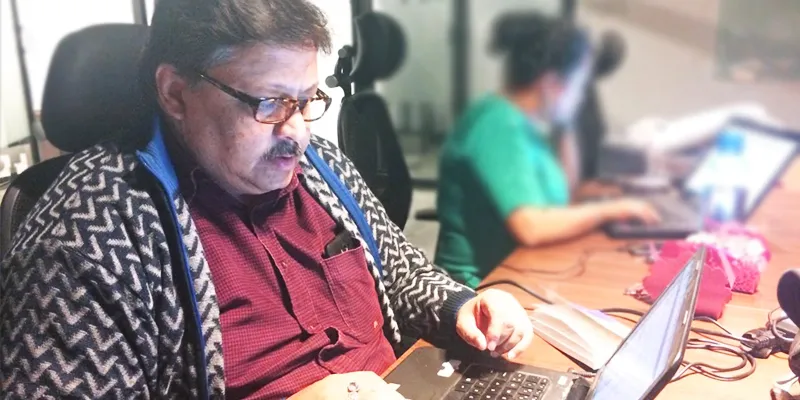Budget 2017: Relief for the middle class and small businesses
Finally, the highly anticipated Budget 2017 has arrived, despite protests from the Congress to postpone the session due to the death of former Union Minister E Ahamed.
Post demonetisation, the middle class has faced many problems due to a cash crunch. They have been clamouring for tax benefits as a gesture of goodwill from the government for the hardships they have faced. And the finance minister appears to have answered their prayers.

Tax rates slashed
The tax rate for those with income in the Rs 2.5 lakh–5 lakh bracket has been slashed from 10 percent to 5 percent. The rebate u/s 87A has been reduced to Rs 2,500 and is only available for income up to Rs 3,50,000. The revised tax slabs for Financial Year 2017–18 are as follows:
This means that with the rebate, people with income up to Rs 3 lakh will pay NO tax. Considering the reduction in tax rates and deductions under 80C (which remains capped at Rs 1.5 lakh), income up to Rs 4.5 lakh will be exempt. All other categories will also enjoy a uniform reduction up to Rs 12,500 tax due to the tax rate cut. This will mean more money in the hands of the middle class.
Highest income group
For people with an income between Rs 50 lakh and Rs 1 crore, a new 10 percent surcharge will be applicable on tax. The earlier 15 percent surcharge for income above Rs 1 crore remains unchanged.
No scrutiny for first-time filers and one-page form
People filing returns for the first time will not be subject to IT scrutiny unless there is a clear indication of cash deposits under demonetisation. Also, people with income under Rs 5 lakh (without any business income) will now file a simplified one-page return. This will encourage people to file returns and get all the benefits of filing like easier access to home loans, bank accounts, and more.
Lesser time to revise returns
The time period for revising a tax return is being reduced to 12 months, thus bringing it at par with the time period for filing of returns. This is being done in order to allow tax filers to claim refunds quickly.
Capital gains — changes
Long-term holding has been reduced to two years, and the base year for indexation will now be 2001 instead of 1982. This will bring down the capital gains liability significantly. This move will encourage more people to invest and encourage mobility of assets. The umbrella financial instruments under which the capital gains can be invested without payment of tax will also be expanded. These will be notified later.
Senior citizens
Aadhaar-based smart cards containing health details will be introduced for senior citizens. LIC will also implement a scheme for senior citizens to provide assured pension, with a guaranteed return of 8 percent per annum for 10 years.
Service charge on railway tickets removed
Service charge on e-tickets booked through IRCTC has been withdrawn to bring rail tickets at affordable prices to the general public.
Housing income
Bad news for first-time home buyers — the additional Rs 2 lakh deduction on home loan interest (sec 80EE) given in 2016 has now been withdrawn. Also, earlier, one could carry setoff any amount of house property loss. Now this has been limited to only Rs 2 lakh. For example, if you have a house property loss of Rs 11 lakh, you can set off only Rs 2 lakh this year. The remaining Rs 9 lakh will be carried forward for eight assessment years.
Lower taxes for small businesses
In this year’s Budget, the finance minister has focused on SMEs since small businesses make up a large portion of the Indian economy and employ a large portion of the workforce. The FM has introduced many changes which will benefit small businesses.
Income tax for small businesses has been reduced across the board. Small companies with annual turnover up to Rs 50 crore will now only pay income tax at 25 percent. As the honourable finance minister says, this will cover 96 percent of the Indian companies and thus boost Indian business. It will also encourage many businesses to adopt legal company structures.
Longer carry forward of MAT
Jaitley stated, “It is not practical to remove or reduce MAT at present.” MAT credit can now be carried forward for 15 years instead of 10 years. This will help businesses all over India adjust the MAT credit to further reduce their tax liabilities in future.
Focus on digitisation
As expected, Budget 2017 has seen a renewed push toward digitisation. Aadhaar Pay will be launched shortly, specifically targeting users who do not have debit cards or mobile phones. Banks will introduce an additional 10 lakh new Point of Sale terminals by March 2017 with a mandate to introduce 20 lakh Aadhaar-based POS machines by September 2017.
Increased digital transactions through Aadhaar Pay and the BHIM app will help easy documentation and traceability of transaction history of SMEs. This will make loan approvals easier and hassle-free. The government will also refinance credit institutions which offer unsecured loans at reasonable interest rates to borrowers based on their transaction history.
Stricter policy on cash transactions
Cash transactions have been restricted, with only Rs 10,000 cash expenses now allowed as deduction for businesses. Cash donations to charitable organisations and political parties will be limited to Rs 2,000 per source. Also, a scheme will be implemented to offer electoral bonds, where a donor can purchase bonds from banks against digital payments only. They will be redeemable only in the account of a registered political party within a prescribed time limit.
Cost of cigarettes, tobacco to increase
In the interest of public health, the government has increased the excise duty levy on cigars, cigarettes, and other tobacco substitutes. This levy has been increased from Rs 3,755 per 1,000 to Rs 4,006 per 1,000. For paper-rolled biris, this levy has been increased to Rs 78 per 1,000 from Rs 21 per 1,000 presently. The finance minister has reduced the custom duty on certain inputs and raw materials to reduce costs for LNG, machines for renewable energy, and parts for LED bulbs.
The indirect tax scene has not changed significantly as GST is expected to be rolled out on July 1, 2017, subsuming all the current indirect taxes.
Rural development
Budget 2017 sees a huge amount of funds allocated to developing the rural and the poorer areas. It focuses mainly on digitisation and small businesses along with providing relief to the middle class. It also brings bad news to tax evaders, bringing in stricter measures.







